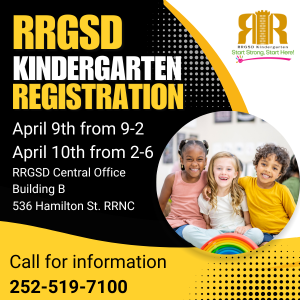“The RRGSD staff is beginning to review and reflect on the data from the assessments,” Superintendent Dennis Sawyer said in a statement. “We are encouraged with our progress and focused on areas in need of improvement.”
Sawyer said in the statement, “While standards are much higher today, the RRGSD team of educators and support staff are up to the challenge of the new READY accountability model.”
The only school in the Roanoke Rapids Graded School District to not meet state standards was Roanoke Rapids High School, although the school did experience growth over the previous year.
Across the state, almost 75 percent of North Carolina public school schools (74.7 percent) met or exceeded their academic growth goals in 2013-14, according to the 2013-14 Performance and Growth of North Carolina Public Schools report today presented to State Board of Education members. This is an increase of 3.4 percentage points from 2012-13.
In addition to academic growth, results also were provided for the end-of-grade and end-of-course tests as well as The ACT, ACT WorkKeys, four- and five-year cohort graduation rates, and the percentage of graduates passing Math III, Integrated Mathematics III or Algebra II (North Carolina's measure of math rigor in high school).
Although the graduation project is not a required component of the state's accountability model, the percentage of high schools requiring a graduation project also was reported.
State Superintendent June Atkinson said she was pleased that academic growth moved up last year. "If history is any indication, we will continue to see increases in the percentage of schools meeting or exceeding academic growth. As we move into the third year with the current Standard Course of Study and teachers and students become more familiar with its expectations, academic growth and proficiency will continue to increase."
State Board of Education Chairman Bill Cobey said, "The State Board is committed to high standards with the expectation that our educators and students will rise to meet them. It is imperative that we do everything we can to challenge our students while in school so that when they graduate they will be able to compete with anyone for jobs on a global scale."
North Carolina's new accountability model continues to provide information on both academic growth rates and the percentage of students who scored proficient on state assessments. Growth reflects the academic progress students made during the course of the school year.
It is quite possible for a student or a school to have a strong pattern of academic growth yet have many students who may not have scored proficient or above on state tests. Some students begin the school year behind their peers and will need to achieve significant academic growth in order to meet proficiency standards by the end of the grade or course. Also, standards are much higher now than in the past, which makes it more challenging for some students to reach proficiency levels.
In terms of academic growth, 769 schools (31.8 percent) exceeded expected growth. A total of 1,038 schools (42.9 percent) met expected growth, and 615 schools (25.4 percent) did not meet growth goals. In 2012-13, 28.6 percent of schools exceeded growth, 42.7 percent met growth and 28.7 percent did not meet growth.








